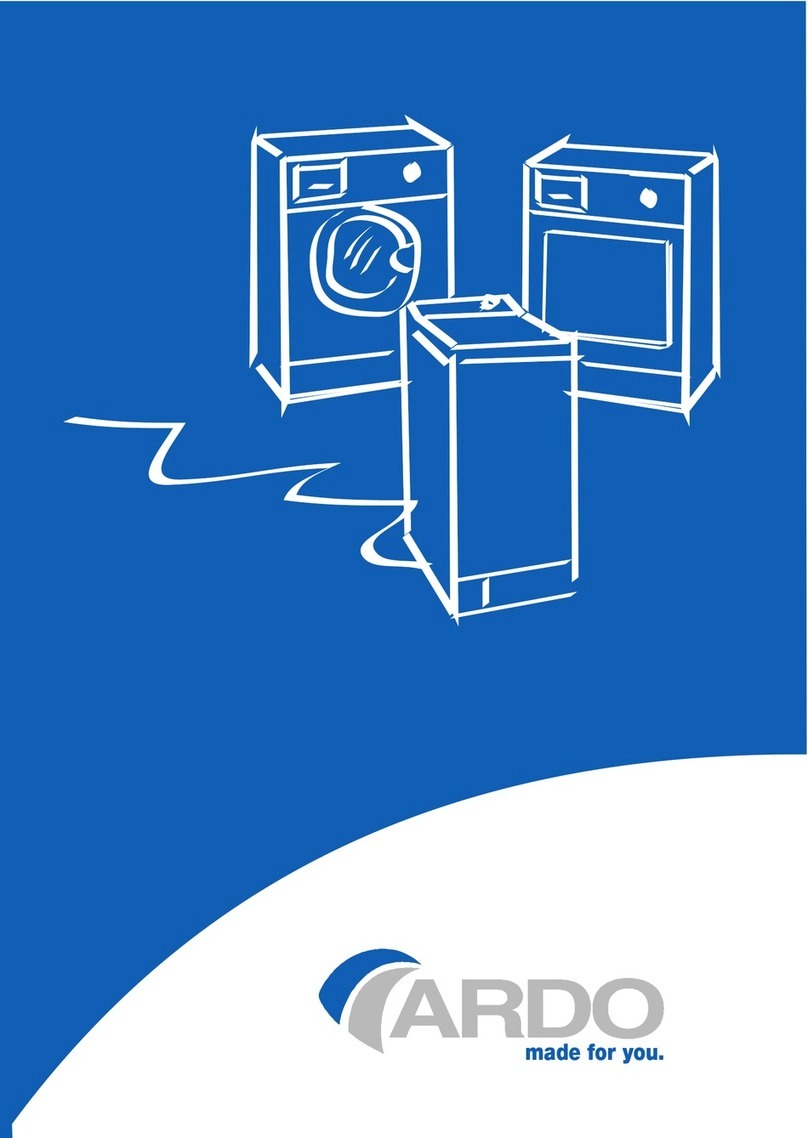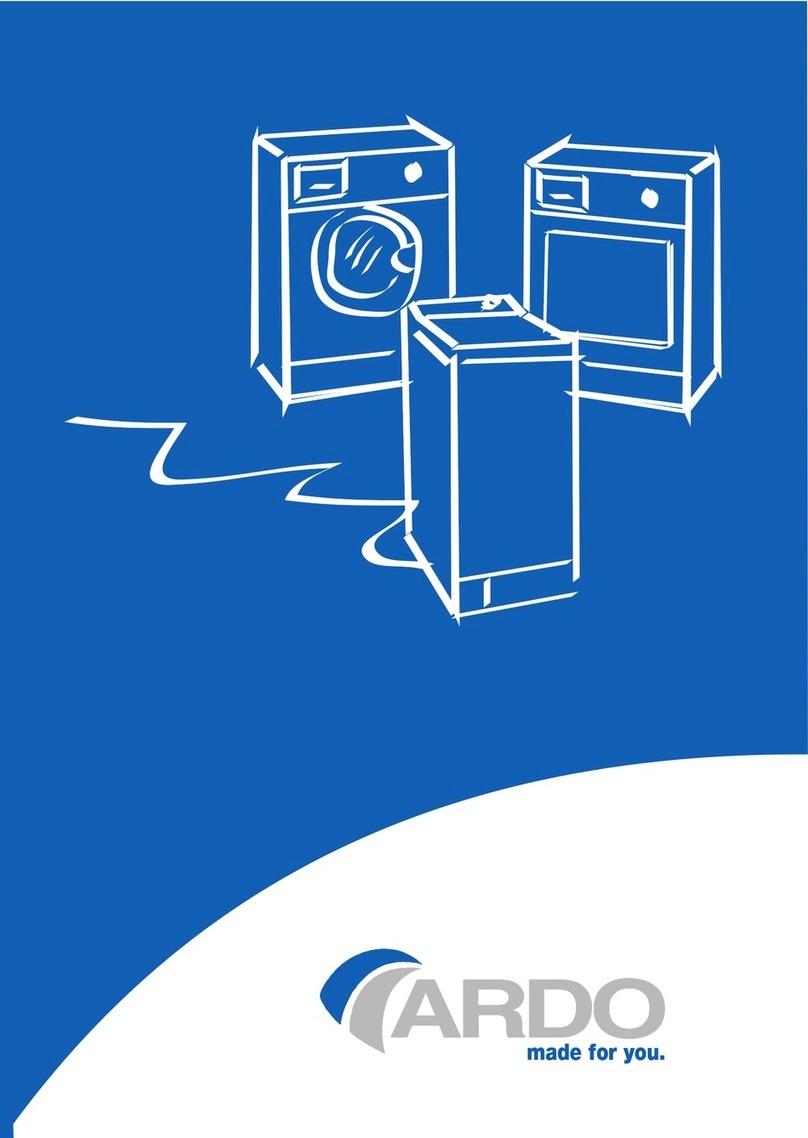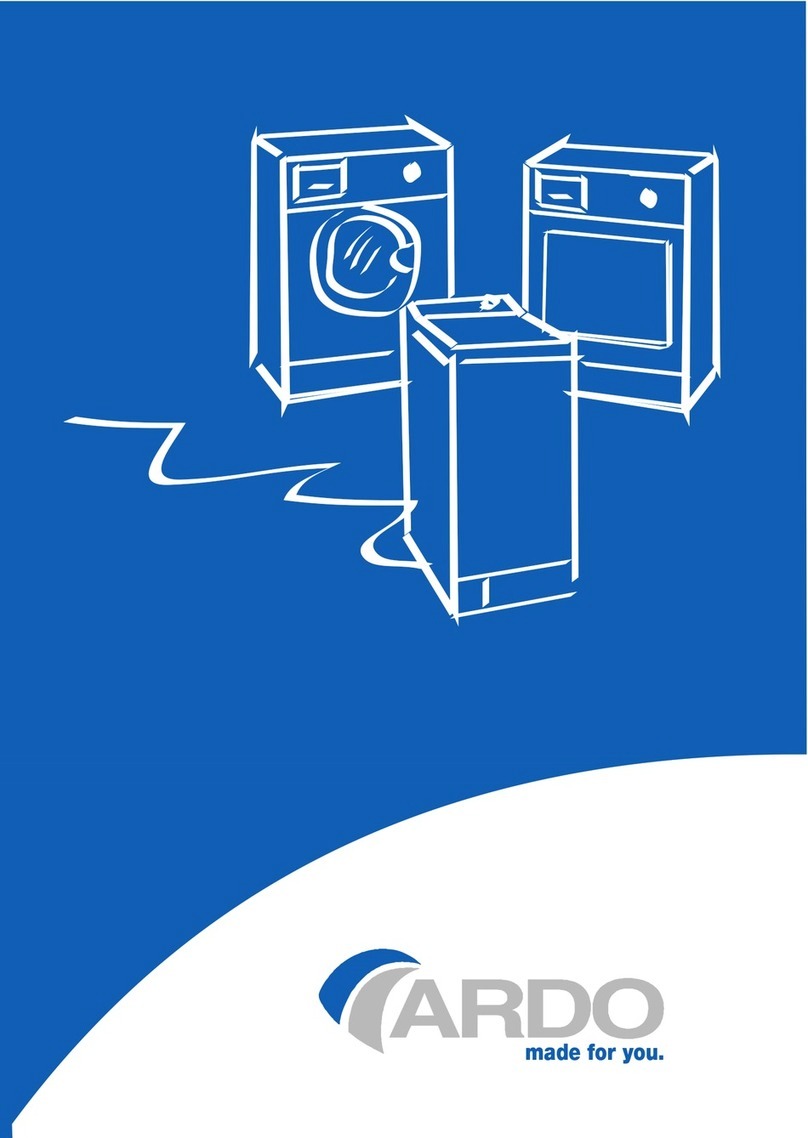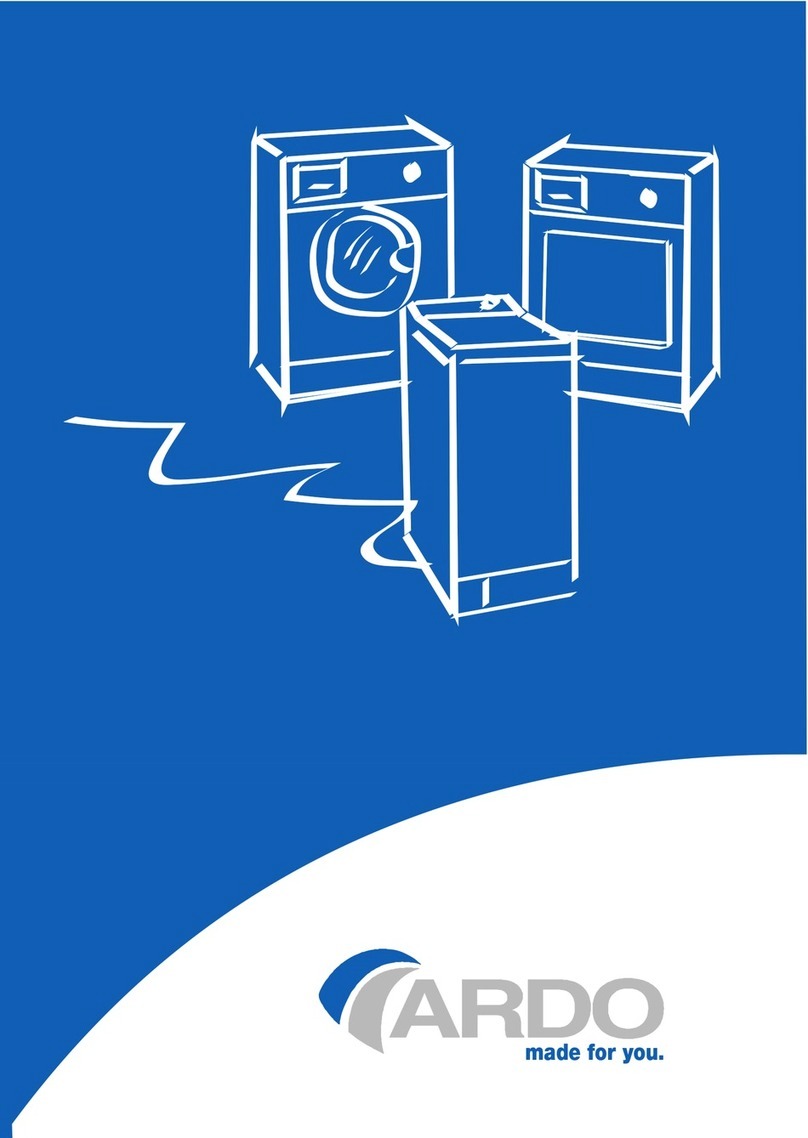
4
SM1888
NOTE E CONSIGLI PER L’UTILIZZATORE
▼L’uso di questo apparecchio dovrà essere quel-
lo di asciugatore per uso domestico ogni altro
utilizzo è da considerarsi improprio e quindi
pericoloso.
▼Conservare il presente manuale d’uso sem-
pre vicino all’asciugatrice in modo da poterlo
consultare rapidamente se necessario.
▼Qualsiasi modifica o tentativo di manomissio-
ne dell’apparecchio può essere pericolosa per
l’utilizzatore e provocare danni al prodotto.
▼Alla consegna dell’elettrodomestico, verifica-
re che risulti indenne da eventuali danneggia-
menti dovuti al trasporto. Se si rilevassero
danneggiamenti, rivolgersi immediatamente al
rivenditore.
▼Durante il ciclo d’asciugatura, l’aria della stan-
za viene convogliata attraverso il lato poste-
riore dell’elettrodomestico. Non coprire l’asciu-
gatrice con biancheria o altro.
▼Nel posizionare l’apparecchio assicurarsi che
il cavo di alimentazione non subisca piegature
ne compressioni e sia accessibile, per even-
tuali interventi.
▼Si ricordi che durante il ciclo d’asciugatura, il
vetro dell’oblò e il tubo di scarico si scalderan-
no anche fino ad una temperatura di 60°. Non
toccare queste parti prima della fine del ciclo
di raffreddamento.
▼E’ vietato l’uso della macchina ai bambini, se
non sorvegliati.
▼Non far mai asciugare capi che siano stati a
contatto di agenti chimici come ad esempio
fluidi di pulitura a secco.
Sono infatti di natura volatile e potrebbero
causare esplosioni.
▼Non far asciugare capi con gomma espansa o
parti in gomma, in quanto potrebbero scioglier-
si e danneggiare altri capi di biancheria o ad-
dirittura l’elettrodomestico stesso.
▼Se l’elettrodomestico viene venduto o regala-
to, si ricordi di consegnare anche il presente
manuale che consentirà al successivo proprie-
tario di utilizzare l’asciugatrice in modo corret-
to e sicuro.
▼Non si può tentare di riparare da soli i guasti
dell’apparecchio perché le riparazioni effettua-
te da non professionisti possono provocare
seri danni e tolgono il diritto alle riparazioni di
garanzia.
▼Le riparazioni dell’apparecchio possono essere
effettuate esclusivamente da personale auto-
rizzato dei centri di assistenza. Per le ripara-
zioni devono essere usate solo parti di ricam-
bio originali.
▼Centrifugare o strizzare bene la biancheria
prima di caricarla nell’asciugatore. La bianche-
ria ben centrifugata si asciugherà più in fretta.
▼Pulire bene il filtro ogni volta che si utilizza
l’asciugatrice, in modo da garantire una per-
fetta circolazione dell’aria.
▼Non attaccare oppure staccare la spina dalla
presa della corrente elettrica con le mani ba-
gnate.
▼La macchina deve essere collegata ad una
presa di corrente elettrica provvista di messa
a terra e conforme alle esigenze di sicurezza.
▼E’ vietato collegare la macchina alla presa elet-
trica utilizzando prolunghe o spine multiple.
▼Non esporre l’apparecchio ad agenti atmosfe-
rici.
▼Eseguendo le revisioni o le pulizie ricordarsi
di staccare l’apparecchio dalla presa della cor-
rente elettrica.
Nel caso si voglia staccare la macchina dalla
presa della corrente non tirare il cavo elettrico
ma la spina.
▼Questo apparecchio è contrassegnato in con-
formità alla Direttiva Europea 2002/96/EC,
Waste Electrical and Electronic Equipment
(WEEE). Assicurandosi che questo prodotto
sia smaltito in modo corretto, l’utente contri-
buisce a prevenire le potenziali conseguenze
negative per l’ambiente e la salute. Il simbolo
sul prodotto o sulla documentazione di ac-
compagnamento indica che questo prodotto
non deve essere trattato come rifiuto dome-
stico ma deve essere consegnato presso l’ido-
neo punto di raccolta per il riciclaggio di appa-
recchiature elettriche ed elettroniche. Disfar-
sene seguendo le normative locali per lo smal-
timento dei rifiuti. Per ulteriori informazioni sul
trattamento, recupero e riciclaggio di questo
prodotto, contattare l’idoneo ufficio locale, il
servizio di raccolta dei rifiuti domestici o il ne-
gozio presso il quale il prodotto è stato acqui-
stato.
IT
LA DITTA PRODUTTRICE DECLINA QUAL-
SIASI RESPONSABILITÀ PER EVENTUA-
LI INCIDENTI PROVOCATI DALLA NON
OSSERVANZA DELLE NORME DI SICU-
REZZA NONCHÉ DELLE ISTRUZIONI
D’USO































